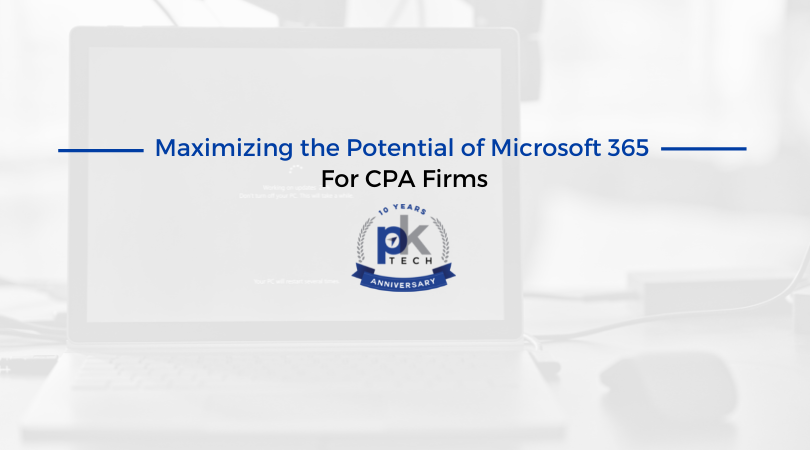Three Cybersecurity Trends CPAs Should Know About
The April tax deadline has come and gone, so now is the time for CPAs to address significant cybersecurity trends that emerged this year. These...
1 min read
Megan Schutz : February 17, 2021

At PK Tech, we service several industries, but our roots lie deep in CPA firms. Since the beginning, PK Tech has provided IT support for CPA firms, and we’ve learned a few crucial things in the process.
When choosing a portal for your CPA firm, there are several essential things to consider. This blog will dive deeper into what you should be analyzing before choosing a portal for your firm.
Start by asking some key questions. How does your firm exchange critical financial documents with clients? Do clients send bookkeeping and tax documents through email attachments or by regular mail? These are essential questions to consider because these are not necessarily secure or scalable methods to transfer sensitive client information.
This is where a portal comes in. What exactly does a portal do, and why is it so crucial for your firm? A client portal offers a simple, secure solution where accountants and clients can log-in to share, upload and view documents, messages, and files.
Check out our related blog: Checklist: 7 Steps to Take Your CPA Firm Paperless.
As you consider these seven questions, PK Tech is here to help you find the correct answers for your firm. Choosing a portal that is the right fit for your specific CPA firm will aid your firm’s efficiency and profitability. Questions about choosing the right portal for your firm? We’re here to help. Contact PK Tech here.

The April tax deadline has come and gone, so now is the time for CPAs to address significant cybersecurity trends that emerged this year. These...

Microsoft 365 is full of hidden gems that CPAs can turn into a competitive differentiator.

As keepers of some of the most sensitive data, CPAs often wonder: what are the best online portals and workflow solutions to protect client data?